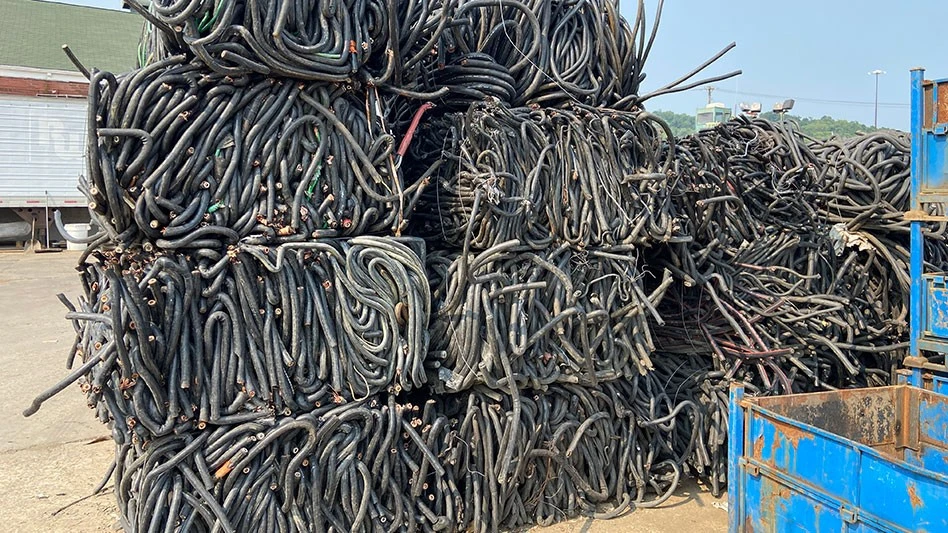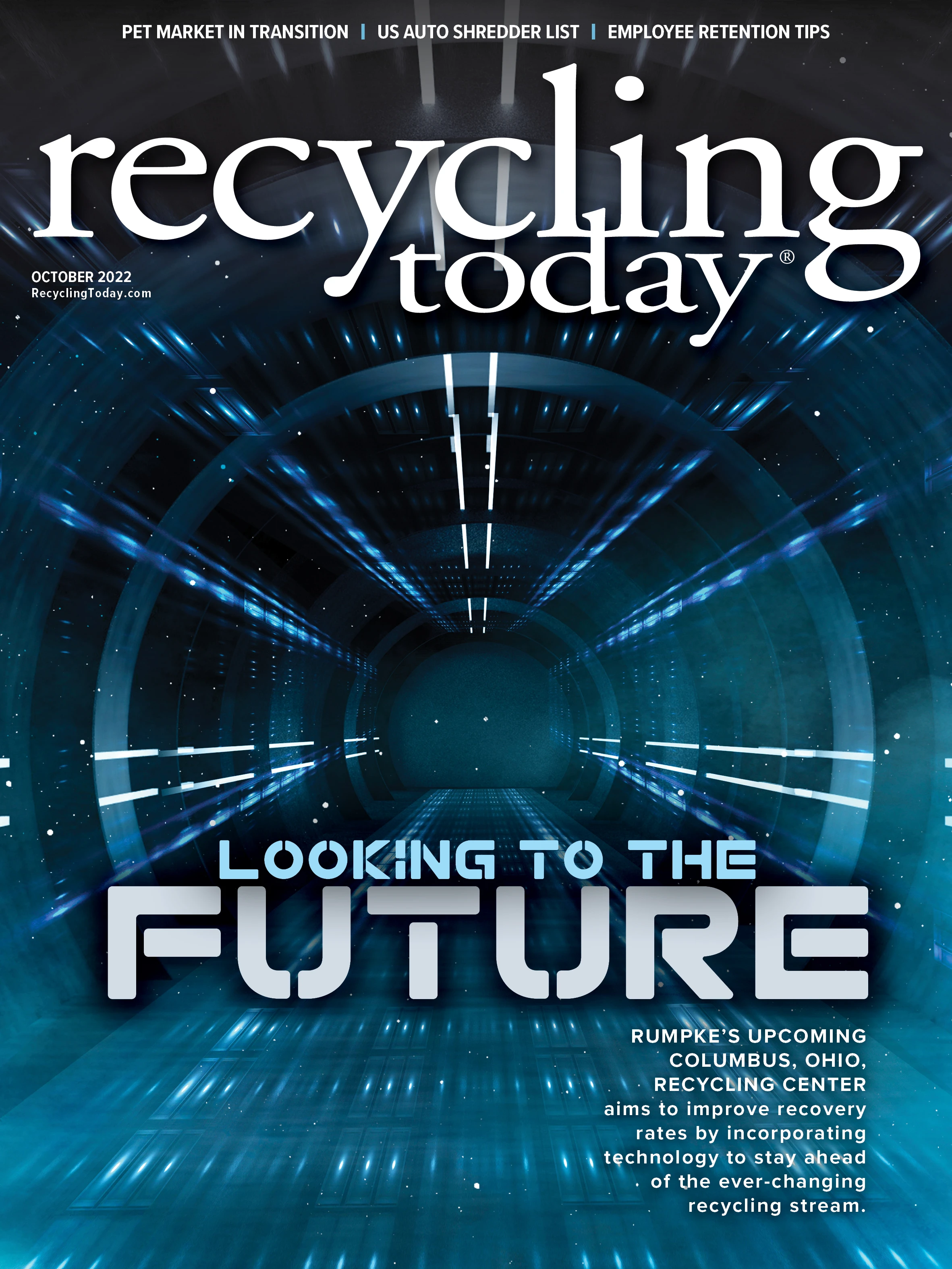

Like every other recycling endeavor, the adage “scrap is bought and not sold” means owners and managers of wire processing firms spend a considerable amount of time and attention on supply matters.
The sales side of wire and cable recycling, however, has been subject to numerous changes the past several years. While seeking supply remains the top issue for wire chopping plant operators, a look at the sales side could be in order.
For many such companies, domestic markets remain paramount, with the export market remaining a destination for unprepared or semiprepared materials, such as lower content wire or the insulated copper wire (ICW) fragments yielded by the auto shredding process.
Several processors Recycling Today contacted, however, say they sell to the export market (with varying levels of involvement) when the opportunity presents itself.
Knocks on the door
Of five wire chopping plant operators interviewed by Recycling Today, two indicate they have very little involvement with the export market, while the others receive regular inquiries from potential buyers and follow up on them semiregularly.
Located near the geographic center of the United States, Mallin Cos., based in Kansas City, Missouri, rarely has need to look overseas. “We have seen very little inquiries over the last 18 months; most of our product stays domestic,” Mallin Cos. Vice President Zach Mallin says.
To the south, Patrick Merrick, president of El Paso, Texas-based W. Silver Recycling, says inquiries from overseas buyers are more frequent. “We have seen healthy activity for copper chop inquiries and demand, primarily from China, with more sporadic demand from Europe and other Asian countries,” he says.
Chicago is considered a North American freight hub, and Todd Safran of Safran Metals says his wire chopping business in the city also receives inquiries from beyond the U.S. He says a divide remains between requests for higher value No. 1 copper chops versus those for lower value wire and cable.
“At the end of the year, we might have a couple of dialogues regarding chop interest from European companies and potentially sending material to Europe,” Safran says, but he largely calls this “nothing of substance and nothing more than the usual inquiries you might get over time.” He adds, “The majority of cold calls for low-grade wires and otherwise still comes from Asian destinations.”
Brian Shine at Lancaster, New York-based Manitoba Corp. also receives numerous inquiries but largely finds his finished product staying onshore. Both last year and this year, he says, “more inquiries have been received. However, to date, the pricing can’t match what we can get domestically. I am hopeful that there will be opportunities in the future.”
Buyers of finished chops are in Eastern European countries and South Korea, Shine says, “though again we do not do anything currently.”
In Loxley, Alabama, Brock Norris of Ecovery LLC has received inquiries from overseas buyers that are more in line with what W. Silver is experiencing in Texas. “We have seen great demand from overseas consumers in regard to copper chops,” Norris says. “We’ve seen that in Europe and in Asia consistently. Then, regarding unprepared, India has been our biggest competitor, and they are very eager these days.”
The U.S. Census Bureau attempts to track copper scrap exports, though when the U.S. Geological Survey (USGS) aggregates that data into monthly and annual reports, chops appear to be included in the unalloyed No. 1 copper and No. 2 copper scrap categories, meaning precise wire chops data are not at hand.
Parsing the data
Using the No. 1 copper export as a far-from-perfect stand-in as a category that could include chops, figures from the first five months of 2022 compared with the same time frame last year show some changes in trade patterns.
From January to May, five of seven European countries that imported No. 1 copper scrap from the U.S. increased their shipment volumes compared with last year. Two nations, however, have been less active, including Germany, which led the European buying pack in the first five months of 2021.
Upping their U.S. buying presence, however, have been Spain, Poland and Belgium. The latter country has increased its No. 1 copper buying volume by 165 percent, becoming Europe’s largest buyer in early 2022 at 7,060 metric tons.
Overall, exports of No. 1 copper from the U.S. to Europe rose by more than 61 percent to more than 19,800 metric tons in the first five months of 2022 compared with 2021.
As Asian countries enacted barriers to unprocessed or lightly processed scrap, global demand for U.S. No. 1 copper seems to have risen accordingly. Vendors of wire processing equipment say they have been in a back-order situation for some time, and the U.S. export numbers seem to confirm equipment deployment.
China joins Europe in seeking more No. 1 copper scrap from the U.S. In the first five months of 2021, China and Hong Kong combined to import 16,200 metric tons of the grade. In the same time frame this year, China (which now includes Hong Kong) purchased 33,300 metric tons of the material—105 percent more.
Globally, the U.S. has exported 46.3 percent more No. 1 copper scrap in the first five months of this year compared with last: 74,500 metric tons to 50,900. That is when few scrap dealers are likely to say they have experienced a 46 percent increase in wire and cable scrap inflows.
Tracking aluminum chop export sales is even more difficult, as the USGS simply treats aluminum scrap as a single category in its export summary statistics. What is known is that in the first half of this year, the U.S. shipped out 2.95 percent more aluminum scrap than in the first half of 2021, but Europe’s purchases of material rose by an astounding 253 percent.
While in the first half of last year, European countries bought just 0.8 percent of exported U.S. aluminum scrap, in the first half of this year, the continent’s purchase share rose to 2.8 percent of the total. Asian countries remain the bulk buyers of exported U.S. aluminum scrap.
Exploring the alternatives

Business owners tend to plan and prepare for any number of future scenarios. It must be difficult for a wire processing company owner not to be intrigued by the growing electric vehicle (EV) and alternative energy markets.
Within the U.S., aspects of the federal government’s 2021 infrastructure law and this year’s Inflation Reduction Act create policy and funding pathways to EV and alternative energy growth.
Regarding advances in EV market share or in energy sectors that might influence nonferrous metals demand, however, the market to a great extent remains the key driver, while states take wildly conflicting energy policy approaches.
The member countries of the European Union, meanwhile, largely are putting in place goals and timelines to shift relatively rapidly away from fossil fuels in the transportation sector and to a broader “renewables” category for energy needs.
No matter how fast these changes occur, metals industry analysts are convinced the shifts mean the world’s hunger for copper (and several other metals) will outpace supply for the rest of this decade.
A BloombergNEF (BNEF) report points to ongoing high prices and shortages of copper followed by continued investment in nonferrous recycling capacity.
The mid-August Bloomberg summary of the copper report states, “The world may have to rely on new recycling technologies to prevent shortages of copper as the shift toward clean energy supercharges demand for the wiring metal.”

Sung Choi and fellow analysts at BNEF are forecasting annual copper demand as being “set to expand 53 percent to 2040, mainly driven by the electrification of transport and infrastructure.”
On the supply side, the BNEF analysts say primary supply might increase just 16 percent thanks to the difficulty of expanding existing copper mines or creating new ones. Narrowing a projected shortfall of from 5 million to 14 million metric tons by 2040 might be a lot to ask of recyclers.
The EV-related portion of that demand has grown the fastest in China, but Europe is not far behind, with buyers in several nations there showing a growing preference for EVs compared with traditional internal combustion engine vehicles.
Rising interest in EVs in Europe has resulted in a faster growing copper-wired EV charging infrastructure. “Looking at the first half of 2021, Europe was expected to account for the highest share of new electric vehicles registrations (1.06 million new registrations), whereas the United States was expected to have only 297,000 new electric cars registrations,” according to Poland-based technology provider Codibly. “Europe is expected to reach 1.3 million public EV chargers by 2025, whereas the current number of U.S. public EV charging stations is 43,000.”
To the extent that more U.S. nonferrous scrap is heading to Europe this year than last year, the continent’s faster switch to EVs and accompanying charging infrastructure potentially are factors.
U.S. wire recyclers likely will stay focused on acquiring supply. But a growing high-grade copper scrap export market might boost near-term profit margin.

Explore the October 2022 Issue
Check out more from this issue and find your next story to read.
Latest from Recycling Today
- Lautenbach Recycling names business development manager
- Sebright Products partners with German waste management equipment company
- WasteExpo transitions to biennial format for enhanced experiences
- Study highlights progress, challenges in meeting PCR goals for packaging
- Washington legislature passes EPR bill
- PureCycle makes progress on use of PureFive resin in film trials
- New copper alloy achieves unprecedented high-temperature performance
- Gränges boosts profits and sales volume in Q1 2025





